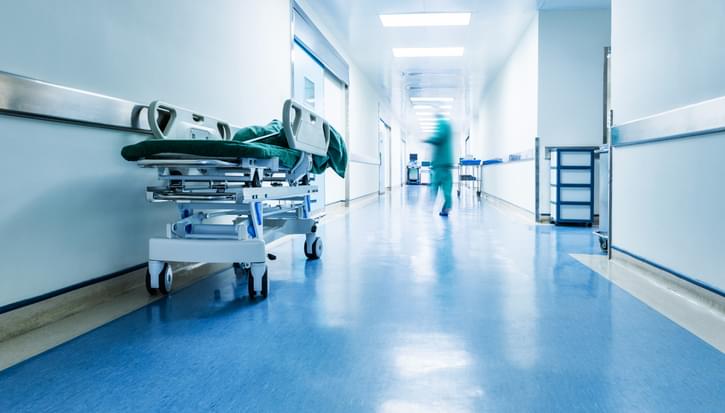Climate Change and the Worst-Case Scenario by Simon Beard
Climate Change and the Worst-Case ScenarioArticle
After a year of unprecedented meteorological extremes, the impacts of climate-induced catastrophes are finally getting some attention. The number of catastrophic meteorological events has already tripled over the past 30 years and 2017 had, by early October, equaled previous record years for major weather disasters in the USA. However, this is a trend that has only just started. In truth, a few hurricanes and wildfires, even ones that cause hundreds of billions of dollars' worth of damage, are far from the worst things climate change is likely to cause.
According to one prominent risk assessment by the atmospheric scientist Veerabhadran Ramanathan, climate change could be 'beyond catastrophic'. In the worst-case scenario, where global temperatures rise by 5 degrees or more, climate change could end human civilization once and for all, taking most of the Earth's species with us.
At present, however, countries around the world have committed to holding global warming to "well below" 2 degrees above pre-industrial levels, which, as one analysis in Nature Geoscience recently put it, is "not yet a geophysical impossibility". This would imply that human beings end up producing ‘only’ around twice as much atmospheric warming as we have already experienced since pre-industrial times. However, even if all countries honour these commitments, that may not be enough to stave off climate catastrophe.
For one thing, when a system is as large and complex as the global climate, it just cannot be steered with any degree of precision, and understanding the long-term impact of emissions is near impossible. For instance, the last time the earth's atmosphere contained as much carbon dioxide as it does now, during the mid-Pliocene around 3 million years ago, global surface temperatures were probably already well above 1.5 degrees warmer than our pre-industrial levels, and sea levels may have been 20 meters higher.
A key challenge for assessing the impact of greenhouse gas emissions is determining the ‘climate sensitivity to carbon', the expected effect of doubling the amount of carbon dioxide in the atmosphere on global surface temperatures. Despite massive improvements in our understanding of the physics of climate change, the degree of our climate's current sensitivity to carbon remains surprisingly uncertain. Indeed, the IPCC's assessments of this crucial variable remain little changed since their first report in 1990. They believe that there is a greater than 66% chance that it lies somewhere between 1.5 to 4.5 degrees, but as much as a 10% chance that it exceeds 6 degrees.
Given this level of uncertainty, even ambitious efforts to tackle climate change may not be enough to avert catastrophe. For instance, the economist Matthew Weitzman has estimated that under current plans to reduce emissions, we still have a 10% chance of causing 6 degrees of warming or more. Others take a far more pessimistic view, with one recent report arguing that when all potential sources of positive feedback within the climate system are taken into account “we are looking at a greater than one-in-two chance of either annihilating intelligent life, or permanently and drastically curtailing its potential development”.
A second reason why current efforts to mitigate climate change may not be sufficient to avoid catastrophic climate change is that even if we do limit global surface temperature rise to 1.5-degrees, other features of the climate could still go catastrophically wrong. Many things that we would wish to avoid, such as increased hurricane intensity and the so-called ‘Clathrate Gun' (the sudden release of frozen methane from the seabed), are governed more by oceanic temperature than surface temperature, and these can be poorly correlated. Other equally important climatic vital signs include the availability of fresh water and the acidity of our oceans. Our impact on the Earth’s atmosphere are affecting all of these features simultaneously and, as we are finding with diesel emissions, narrow-minded efforts to deal with just one environmental impact at a time often make things worse rather than better. If limiting global surface temperatures to a 1.5 degree is all we achieve, we could still therefore face many other catastrophic global climate changes.
When most people learn about these challenges their response seems to be 'OK, we’re doomed!' However, this is a mistake. For one thing, all this complexity and uncertainty could also mean that we are safer than we feared. The climate may respond less to greenhouse gas emissions than our models predict (although this does appear less likely) and global temperature rises may be less dangerous than we thought. For another, even if things do turn out for the worst, it is not like we are powerless to do anything about it.
I work at the Centre for the Study of Existential Risk, a University of Cambridge research group working to prevent human extinction. We believe that humanity is a lot more resilient, creative and productive than many people give us credit, and that, so long as we do not go extinct, we have a promising future ahead of us. The challenge we face right now is making sure we survive to see it.
The effects of climate change are not linear. For one or two degrees of warming, they amount to 'only' a few percentage points drop in global GDP, hundreds of thousands of extra deaths each year, hundreds of millions of climate refugees. For six degrees of climate change, it becomes reasonable to talk about the total collapse of the global economy, billions of deaths and the prevention of trillions of future lives. So, even if the likelihood of catastrophic climate change is only 10% its impacts may be hundreds or thousands of times worse than those of more ‘likely’ outcomes, and hence their impact on our assessment of the costs and benefits of action should not be insignificant.
Seen this way, averting climate catastrophe should be our number one goal in mitigating and adapting to climate change. That certainly involves adopting the toughest policies towards reducing global greenhouse gas emissions, because even a 10% chance of a climate catastrophe is way too high. And it means studying the potential for such catastrophe much more, so that we understand how likely they are and how to prevent them rather than focusing solely on the most likely outcomes.
However, it also means asking ourselves tough questions about how we might respond if climate change turns out to be a lot worse than we had previously predicted? What plans can we make that would help avoid catastrophe if the global surface temperature starts creeping up beyond 1.5 degrees and shows little sign of stopping? Could we even hope to hold international cooperation together under such conditions, and if not what might individual countries do to respond on their own?
In its 2017 report on global catastrophic risks, the Global Challenges Foundation concluded that “the world is currently completely unprepared to envisage, and even less deal with, the consequences of catastrophic climate change”. It's time that started to change.
Simon Beard is a Research Associate at the Centre for the Study of Existential Risk, University of Cambridge. He tweets @Simon_Beard.
Related items

The health mandate: The voters' verdict on government intervention
The nation’s health is now a top-tier political issue.
Reclaiming social mobility for the opportunity mission
Every prime minister since Thatcher has set their sights on social mobility. They have repeated some version of the refrain that your background should not hold you back and hard work should be rewarded by movement up the social and…
Realising the reform dividend: A toolkit to transform the NHS
Building an NHS fit for the future is a life-or-death challenge.